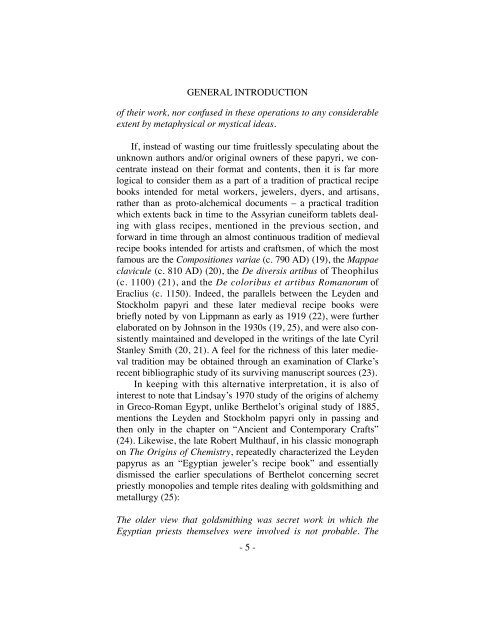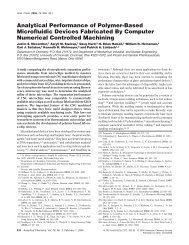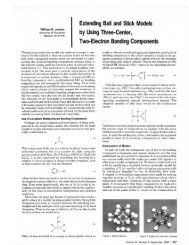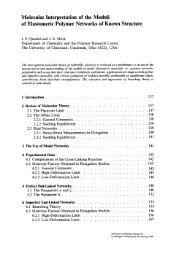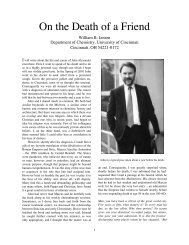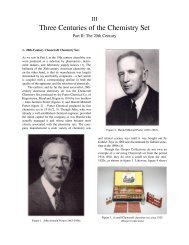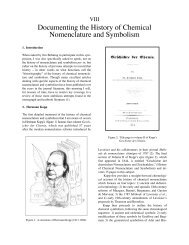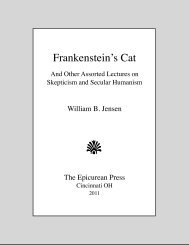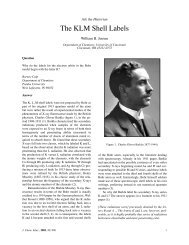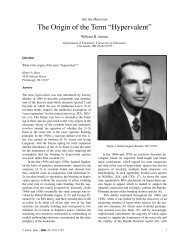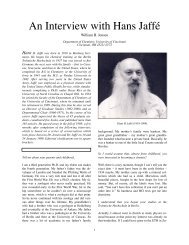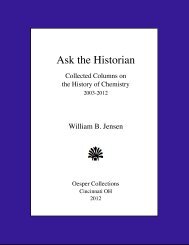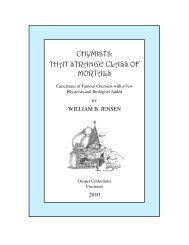The Leyden and Stockholm Papyri - University of Cincinnati
The Leyden and Stockholm Papyri - University of Cincinnati
The Leyden and Stockholm Papyri - University of Cincinnati
You also want an ePaper? Increase the reach of your titles
YUMPU automatically turns print PDFs into web optimized ePapers that Google loves.
GENERAL INTRODUCTION<br />
<strong>of</strong> their work, nor confused in these operations to any considerable<br />
extent by metaphysical or mystical ideas.<br />
! If, instead <strong>of</strong> wasting our time fruitlessly speculating about the<br />
unknown authors <strong>and</strong>/or original owners <strong>of</strong> these papyri, we concentrate<br />
instead on their format <strong>and</strong> contents, then it is far more<br />
logical to consider them as a part <strong>of</strong> a tradition <strong>of</strong> practical recipe<br />
books intended for metal workers, jewelers, dyers, <strong>and</strong> artisans,<br />
rather than as proto-alchemical documents – a practical tradition<br />
which extents back in time to the Assyrian cuneiform tablets dealing<br />
with glass recipes, mentioned in the previous section, <strong>and</strong><br />
forward in time through an almost continuous tradition <strong>of</strong> medieval<br />
recipe books intended for artists <strong>and</strong> craftsmen, <strong>of</strong> which the most<br />
famous are the Compositiones variae (c. 790 AD) (19), the Mappae<br />
clavicule (c. 810 AD) (20), the De diversis artibus <strong>of</strong> <strong>The</strong>ophilus<br />
(c. 1100) (21), <strong>and</strong> the De coloribus et artibus Romanorum <strong>of</strong><br />
Eraclius (c. 1150). Indeed, the parallels between the <strong>Leyden</strong> <strong>and</strong><br />
<strong>Stockholm</strong> papyri <strong>and</strong> these later medieval recipe books were<br />
briefly noted by von Lippmann as early as 1919 (22), were further<br />
elaborated on by Johnson in the 1930s (19, 25), <strong>and</strong> were also consistently<br />
maintained <strong>and</strong> developed in the writings <strong>of</strong> the late Cyril<br />
Stanley Smith (20, 21). A feel for the richness <strong>of</strong> this later medieval<br />
tradition may be obtained through an examination <strong>of</strong> Clarke’s<br />
recent bibliographic study <strong>of</strong> its surviving manuscript sources (23).<br />
! In keeping with this alternative interpretation, it is also <strong>of</strong><br />
interest to note that Lindsay’s 1970 study <strong>of</strong> the origins <strong>of</strong> alchemy<br />
in Greco-Roman Egypt, unlike Berthelot’s original study <strong>of</strong> 1885,<br />
mentions the <strong>Leyden</strong> <strong>and</strong> <strong>Stockholm</strong> papyri only in passing <strong>and</strong><br />
then only in the chapter on “Ancient <strong>and</strong> Contemporary Crafts”<br />
(24). Likewise, the late Robert Multhauf, in his classic monograph<br />
on <strong>The</strong> Origins <strong>of</strong> Chemistry, repeatedly characterized the <strong>Leyden</strong><br />
papyrus as an “Egyptian jeweler’s recipe book” <strong>and</strong> essentially<br />
dismissed the earlier speculations <strong>of</strong> Berthelot concerning secret<br />
priestly monopolies <strong>and</strong> temple rites dealing with goldsmithing <strong>and</strong><br />
metallurgy (25):<br />
<strong>The</strong> older view that goldsmithing was secret work in which the<br />
Egyptian priests themselves were involved is not probable. <strong>The</strong><br />
- 5 -


